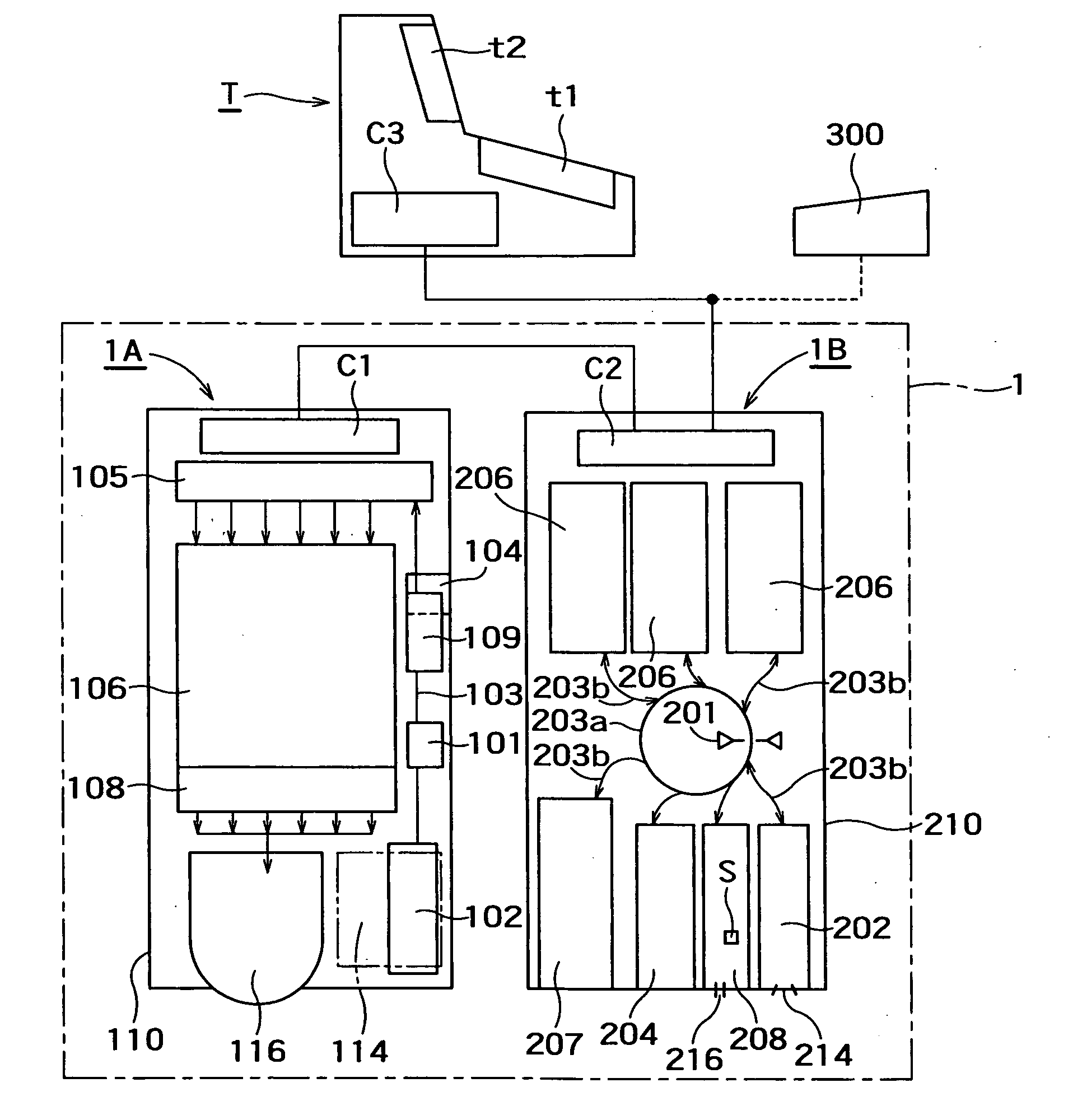Bill/coin processing system
- Summary
- Abstract
- Description
- Claims
- Application Information
AI Technical Summary
Benefits of technology
Problems solved by technology
Method used
Image
Examples
first embodiment
[0105]FIG. 5 is a flowchart showing a change discharge function in the variety of control functions implemented by the POS terminal. A problem is such a case that the money discharged as the changes might be either the bills or the coins. A scheme of a first embodiment is that a coin-first mode (precedence of coin) or a bill-first mode (precedence of bill) can be set beforehand according to the denominations.
[0106]Note that in the case of U.S.A., a preferable coin change discharger is capable of receiving five or more denominations of coins and paying four or more denominations of coins, while a preferable bill change discharger is capable of receiving seven or more denominations of bills and paying two or more denominations of bills.
[0107]The description will be made in due sequence. When the money is deposited after a transaction with the user such as the customer has been conducted (step S101), by the control terminal machine T determines the deposited money, from results of the ...
second embodiment
[0120]In the first embodiment, if possible of paying out both of the coins and the bills of the denomination at the same par value, the coin-first mode or the bill-first mode is previously set. Based on the present state of the change, however, the optimization can also be conducted, and its details are shown in a flowchart of FIG. 6.
[0121]FIG. 6 is the flowchart showing a control flow, in which the processes in steps S107 through S112 and a process in place of step S115 are executed, and the processes having the same contents are marked with the same step numbers.
[0122]After designating the first denomination, the discrimination between the bill and the coin is made about this denomination (step S107). In the case of the coins, the coin change discharger is instructed to repay the coins (steps S108, S109). In the case of the bills, the bill change discharger is instructed to repay the bills (steps S110, S111). These processes are the same as in the first embodiment, however, if the...
third embodiment
[0124]The scheme of the second embodiment is, if possible of repaying both of the coins and the bills of the denomination at the same par value, to give the instruction of repaying the money in the coin-first mode or the bill-first mode corresponding to the residual quantity in the storing / discharging unit. A scheme of the third embodiment, however, as shown in FIG. 7, though only step S112 is different from in FIGS. 5 and 6, enables the type (coin or bill) and the denomination of the receipt money to be selected corresponding to a circulation quantity of the money.
[0125]For example, in the case of one dollar in the U.S.A., the 1-dollar bills have overwhelmingly a larger quantity of circulation, and hence the payment money is limited to the bills while possible management for the deposit is that both of the coins and the bills are received. Furthermore, another possible management is that the 1-dollar coins are disabled from being received itself.
[0126]With this contrivance, the mon...
PUM
 Login to View More
Login to View More Abstract
Description
Claims
Application Information
 Login to View More
Login to View More - R&D
- Intellectual Property
- Life Sciences
- Materials
- Tech Scout
- Unparalleled Data Quality
- Higher Quality Content
- 60% Fewer Hallucinations
Browse by: Latest US Patents, China's latest patents, Technical Efficacy Thesaurus, Application Domain, Technology Topic, Popular Technical Reports.
© 2025 PatSnap. All rights reserved.Legal|Privacy policy|Modern Slavery Act Transparency Statement|Sitemap|About US| Contact US: help@patsnap.com



